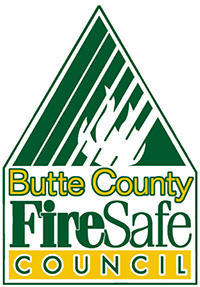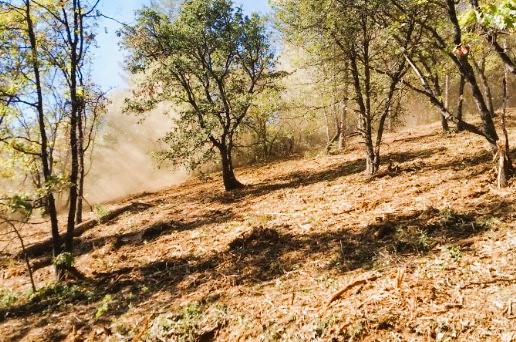No matter where we may live, as we look out our window, we’ll see the ‘home zone’ directly around us. In forestry terms, it’s the area we’d want to remove as much flammable material as possible from, to protect our home. And just past the ‘home zone’ we’ll see broader strategic fuel breaks, especially in the wildland urban interface– or WUI for short. These are forested areas which have been thinned. It’s these areas we want to highlight today. Situated between the ‘home zone’ and the largest landscape-level areas like ridgetops and valleys, strategic fuel breaks are like the meat in a sandwich. Each of the above three zones acts together in concert to protect a community and individual homes.
But the first five feet is essential. As Kieran O’Leary ‘K.O.’ recounts, “We learned you really have to look at both sides of the equation, right next to your home as well as the larger space.” O’Leary, a Registered Professional Forester here at the BCFSC, had spent a career looking at landscape-level issues. He and his family sadly lost their home in the Camp Fire in 2018. O’Leary concludes the lack of clearing material directly around his home (within the 5 five feet) was the weak link.
But what about Strategic Fuel Breaks? And who creates them? Well, they usually start at a group level rather than with individual residents, states K.O. “In this case, the BCFSC worked to create a Community Wildfire Protection Plan or CWPP“, he says. A CWPP is an agreeable vision of where fuel breaks need to be located in and around communities. This could comprise a single community in the WUI, or many. Importantly, many strategic fuel breaks are a collaboration between communities, CAL FIRE, the US Forest Service, the Butte County Fire Safe Council, and the timber industry. In a strategic fuel break, trees are spaced apart, pruned, and brush is removed. This helps prevent the spread of wildfire from landscape-level areas, into a particular community. Also, these shaded fuel breaks can now be used to safely reintroduce fire into the landscape under an appropriate prescription window (controlled burning), during the fall and winter months.
But even the best strategic fuel break can’t protect a community if the ‘home zone’ isn’t kept up. Remember your ‘First five feet’.
For more information on Strategic Fuel Breaks, CWPP’s, and more– visit our Document Library on our website.
(Resources – > Document Library): https://buttefiresafe.net/document-library/
Written by Andrew Burke
Community Education Coordinator, BCFSC

